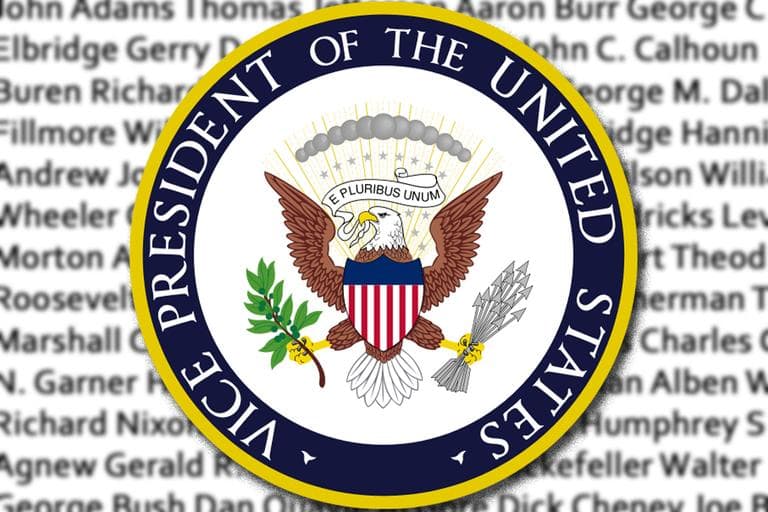Advertisement
How Vice Presidents Matter
ResumeMitt Romney and the VP pick. After Al Gore, Dick Cheney and Sarah Palin, we look at how Vice Presidents matter.

American vice presidents are not all exactly household names. You remember vice president Hannibal Hamlin, right? And Danny Tompkins? Schuyler Colfax? Garret Hobart? Well, maybe not.
On the other hand, LBJ rode hard into history. Richard Nixon was veep and POTUS. So were a bunch of others. Dick Cheney made the imperial vice presidency. Sarah Palin made her name just by being on the ticket. Now Mitt Romney’s about to choose - in a time when the vice presidency is changing.
This hour, On Point: Veeps in history, the veepstakes now, and how vice-presidents matter.
- Tom Ashbrook
Guests
Joel Goldstein, scholar of the Vice Presidency, Presidency, and Constitutional Law at St. Louis University.
From Tom's Reading List
Center for Politics "One of the persistent ideas regarding vice presidential selection holds that presidential nominees seek running mates from large, competitive states. Guided by that assumption, the Great Mentioners invariably include many politicians from such states on the lists of prospective vice presidential candidates that they compose every four years. The premise seems to be that a running mate can minimally, at best, affect the national election returns but that a popular favorite son or daughter may help swing an important electoral block."
The Washington Post "Running mates, by and large, are publicly discussed during the “veepstakes” as a way of balancing the ticket, or complementing the candidate. One might help broaden geographic or ideological appeal: A northeastern liberal (John F. Kennedy, Michael Dukakis) chooses, say, a more conservative running mate from Texas (Lyndon B. Johnson, Lloyd Bentsen). Another might help emphasize a key campaign platform: Jack Kemp, the thinking went, would bolster Bob Dole’s standing on economic issues, while Al Gore reinforced Bill Clinton’s attributes as a young southern centrist from the baby boomer generation."
History News Service "Texas Gov. Rick Perry recently denied any interest in being vice president, and that’s understandable. To be taken seriously, a presidential contender must squelch talk that he or she is really targeting the second spot."
The Drudge Report "President Obama whispered to a top fundraiser this week that he believes GOP presidential hopeful Mitt Romney wants to name Gen. David Petraeus to the VP slot!"
This program aired on August 9, 2012.